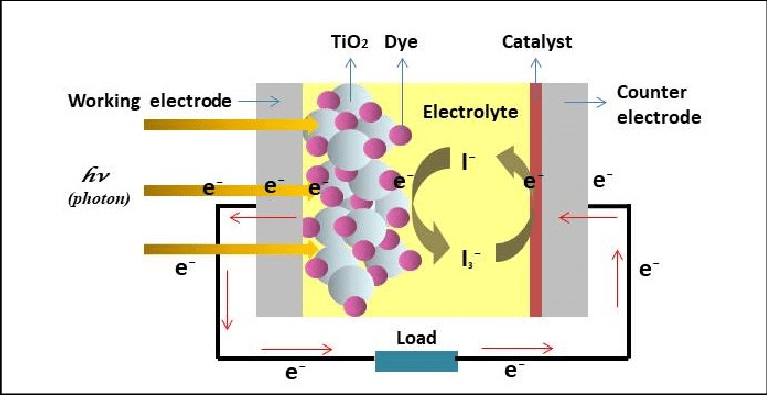
Vegetable waste has a unique relationship with energy
It could be converted into biogas through well known processes such as the use of a biodigester
But it can also be used to harness the sun’s light energy by converting it into electricity.
And here’s how…
PHOTOSYNTHESIS
Several innovations draw inspiration from nature and in this case, photosynthesis is key.
Plants absorb the sun’s energy using a pigment called chlorophyll.
They in turn use this energy to make carbohydrates which we eat.
But what if this same pigment is used to convert the sunlight into electricity?
DYE SENSITIZED SOLAR CELLS (DSSCs)
These are innovative solar cells which use pigments to capture the energy of the sun and convert it into electricity.
To do this, a photosensitive material such as titanium dioxide is coated with a dye – which could be derived from vegetable waste.
This material is coated onto a transparent conductive glasss and connected to a counter electrode.
The counter electrode is composed carbon – or other conducting material – coated on a conducting glass.
The two electrodes (electrically charged surfaces) are separated using an electrolyte which us used to shuttle ions between them.
This electrolyte is composed of Iodine ions which facilitate current movement in the external circuit.
See diagram below.

DSSCs show promising results because they can convert any form of light into electricity.
However, there is a catch because it has a low Power Conversion Efficiency (PCE)
PCE
The power conversion efficiency of a solar cell is the percentage amount of sunlight it converts into electricity.
The commonly used silicon solar cells have a PCE of 30% at best.
However, the best DSSCs have a PCE of less than 15%.
More R&D is taking place to explore different ways of improving the PCE such as research on electrodes, electrolyte materials and dyes.
But this has not stopped the commercialization of the technology especially in low energy applications such as in electronics.
Besides, these solar cells are printable and come in many colors (depending on the dyes used) making them possible candidates for use in rooftops, windows and also in interior design.
IN CONCLUSION
DSSCs are solar cells capable of giving us energy through the use of vegetable pigments.
Perhaps their ability to any light into energy make then very attractive for both indoor and outdoor applications.
This is an area of interest for any innovator cum entrepreneur.